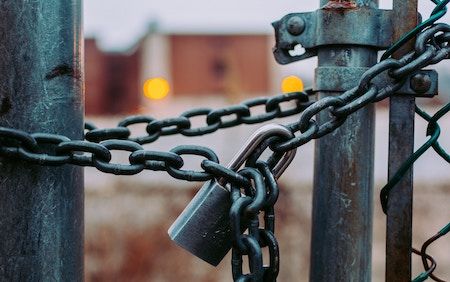
We’re delighted to have a guest post today by Thomas Kahn (who we were also fortunate enough to meet last month at the Frankfurt Beeminder meetup). Thomas is trained as a lawyer and studies how productivity techniques can help law students succeed in their exams. In 2015 he founded the Basiskarten Jura project which produces high-quality Anki-flashcards for German law students. Thomas has been beeminding for almost 5 years with 13 active goals and dozens more archived.
Beeminder’s solution to the problem of akrasia is to increase our short-term motivation for actions that are in our own long-term interest (but wouldn’t get done otherwise because they require a certain amount of unpleasant effort). It does that by punishing failure. This is a great solution for a wide variety of problems, especially anything that can be framed as a “do more” goal.
For some “do less” goals (eat less candy, browse social media less often, etc.) there is another strategy available, however: Making it harder or outright impossible to do these things in the first place.

One example of such a strategy is my app Lock My Phone. Lock My Phone does exactly what its name promises. Just tell it when — and where — you’d like your phone to be unavailable. Want to lock yourself out in the evening so you have an easier time going to bed? (That’s what I do.) Or maybe in the morning when you’re at work so you can get more things done? No problem, just enter the time and address of your workplace and feel like Ulysses resisting the sirens.
“Lock My Phone does exactly what its name promises.”
While this strategy works surprisingly well, I soon noticed a big drawback: If you’re a Beeminder user with multiple goals in need of daily updates you better make sure you put in the data before your phone gets locked in the evening. Otherwise you’re not only causing more unnecessary work for yourself tomorrow — but also for Nikki et al who will have to respond to all of your “Sry, forgot to enter data but did it now, pls reset :(” emails. (Thanks by the way for putting up with that for so long!)
To fix this I wrote a script for the Android app Automate that conveniently lets you add datapoints from the notifications bar. This works because Lock My Phone never prevents you from interacting with the notifications on your lock screen, even while your phone is locked. (You can also always receive calls and call the police or emergency contacts. You just cannot unlock your phone to text back, open apps, etc.)

This makes adding datapoints fast and easy. So you might want to use it even if you’re not into locking yourself out of your phone at all!
Features:
- Works with any number of goals.
- Only displays goals which have not been updated today. This is helpful if you also enter data from other sources like your PC. Simply reload the script (by swiping away the notification) and after refreshing it will only show you the remaining goals for today.
- Works with the free version of Automate because it’s just 30 blocks.
- Easy setup: Just grab your Auth Token and save it in the second block of the flow. I show you how to do that in another demo video.
PS: In preparing this guest post Daniel found a forum post from 2015 by user peppertoni who also used Automate to add datapoints for their goals and did it in a slightly different way than me. If you’re interested in experimenting with Automate and Beeminder, it’s still worth checking out!
Image credits: Title image by Jose Fontano on Unsplash. Ulysses artwork from The National Gallery of Victoria. Animated screenshot by Thomas Kahn.